During the class time, Chanel and I first built the circuit according to the instructions:
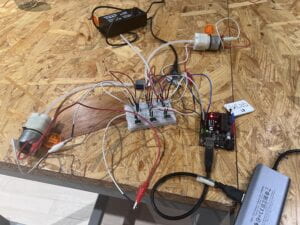
We also checked to see if it worked with the coding:
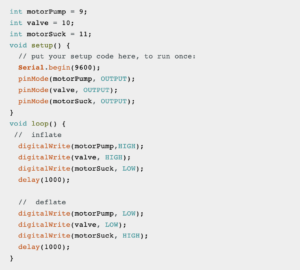
It worked in the end! Yet, we made a big mistake during the process, which was connecting two power directly (one from the computer and one from the adjustable power adapter).
Luckily, since the Mac is self-protected, my computer was not permanently damaged…
Then, after class, we built the four inflatables.
3 from the reading “aeroMorph – Heat-sealing Inflatable Shape-change Materials for Interaction Design” and 1 of our self-design.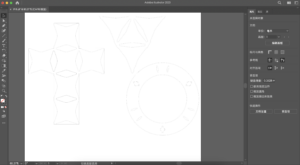
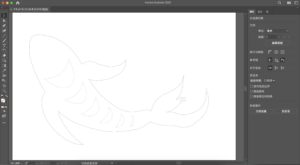
After drawing them in Adobe Illustrator, we sent them to be laser cut off of baking paper.
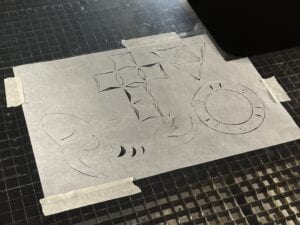
Then, after digging holes in TPU plastic, we put together the layers of TPU and baking paper as a sandwich and sealed them.

We then cut out the shapes and drove the screws. And now we’ve got the four items below:

Then we placed them one by one onto the air pump to observe the effects, and the performance of our fish was the best! The other three didn’t quite work as well, mainly due to two reasons: 1) inadequate sealing; 2) in some areas of the circular and square shapes, the ventilation channels were too small, resulting in insufficient airflow distribution, causing them not to inflate evenly.
Compared to other motors like stepper motors, the most significant difference I feel with this type of motor is that it can not only change the way objects move but also alter their shape and volume, providing a sense of intrinsic dynamic autonomy that extends from the inside out.
In terms of integrating this mechanism into our Project A, what comes to mind is enlarging the inflatables to create shapes resembling muscle contractions, or shapes mimicking opening and closing mouths, as well as larger versions of hair follicles transitioning from lying flat to standing upright. By doing so, when our body reacts to external stimuli and emits sounds and light, the inflatables can resemble many pores on the body producing sound, providing a stronger visual impact and enabling the audience to perceive the design intent more clearly.
Leave a Reply